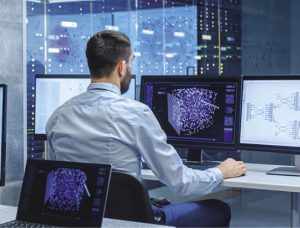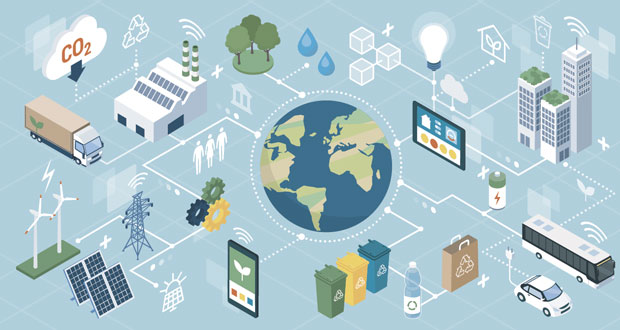 Gary Watkins, CEO of Service Works Global (SWG), believes CAFM provides the means to control and understand buildings and assets like never before.
Gary Watkins, CEO of Service Works Global (SWG), believes CAFM provides the means to control and understand buildings and assets like never before.
A 20 per cent cut in energy costs represents the same bottom line benefit for many businesses, according to the Carbon Trust, but ‘quick wins’ are being missed due to lack of understanding of where energy is used and wasted. Responsibility is falling to the facilities management team to form strategies to reduce energy consumption whilst still maintaining high levels of service provision and workplace productivity.
MOBILE ADVANTAGE
One of the simplest ways to improve sustainability is by switching to a CAFM mobile app. Aside from the productivity gains achieved by instant access to work orders, asset history and documentation, managing work electronically saves reams of paper each year. Take for example, our client Curtin University in Australia. They were awarded Australia’s first 5-star ‘Green Star-Communities’ rating from the Green Building Council of Australia (GBCA), using QFM software from Service Works Global (SWG) to help maintain their green credentials. Curtin averages over 25,000 reactive jobs raised per year and used the QFM app to replace paper job sheets. Creating 60 digital maintenance forms on the mobile app has enabled the team to go paper-free, helping to create a more sustainable organisation.
Well maintained assets draw less energy so effective asset management is a key area of focus when looking at sustainability. CAFM software can be used to calculate the most effective scheduling for maintaining an asset, reducing unnecessary servicing, unscheduled call outs and keeping energy costs low.
The software can monitor energy use and costs, helping to identify where the greatest costs lie to inform new strategies. Across large organisations, small inefficiencies can combine to create substantial performance issues, damaging the environment as well as reducing productivity across the organisation. Even small changes such as switching to LED lighting have played a substantial part in reducing energy demand, consuming 80 per cent less energy than traditional incandescent luminaires and have a lifespan around 10 times longer – meaning less maintenance resource is required in addition to the energy savings generated.
Combined with smart technology, CAFM gives an unprecedented level of data and automation which is essential in this fight against waste. Sensors placed around buildings can detect occupation and identify activity patterns allowing lighting, air conditioning or even cleaning to specific areas to be reduced. Or, using more widespread applications, CAFM can be integrated with BMS and a room booking system, enabling meeting rooms and offices to be powered, heated or cooled, only when in use. In this way responsibility for managing resources can be shared between the FM team and the building users, increasing efficiency and savings.
BIM INNOVATIONS
BIM (building information modelling) is the ultimate innovation in digital data, providing a strong foundation from which to meet green targets for buildings.
BIM models integrated with CAFM software can provide the FM team with key information such as measurements and types of materials to ensure the correct amount of supplies are ordered with no wastage; classifications of each space, minimum / maximum temperatures, and extensive details about each asset to ensure the engineer has everything they need for preventative maintenance. A BIM model can even be paired with virtual reality headsets to allow simulated site visits from anywhere in the world to save travel.
Once the BIM model gains access to continuous data (such as a real-time system, behavioural and operational data) then it becomes a digital twin. A digital twin is the next level of BIM in providing data.
 The digital twin compiles this data to form a virtual replica of the building’s state in real time. Instead of viewing data from various sources on multiple reports, the digital twin can be used to view performance, identify trends and detect building errors – in the same place. Twins can also be used to test different scenarios – like the impact on air quality of a new asset, or how cooling systems would cope with more people in the building. This reduces the impact of disruption or dips in performance of the ‘live’ building environment and can help the FM make greener and more sustainable choices.
The digital twin compiles this data to form a virtual replica of the building’s state in real time. Instead of viewing data from various sources on multiple reports, the digital twin can be used to view performance, identify trends and detect building errors – in the same place. Twins can also be used to test different scenarios – like the impact on air quality of a new asset, or how cooling systems would cope with more people in the building. This reduces the impact of disruption or dips in performance of the ‘live’ building environment and can help the FM make greener and more sustainable choices.





